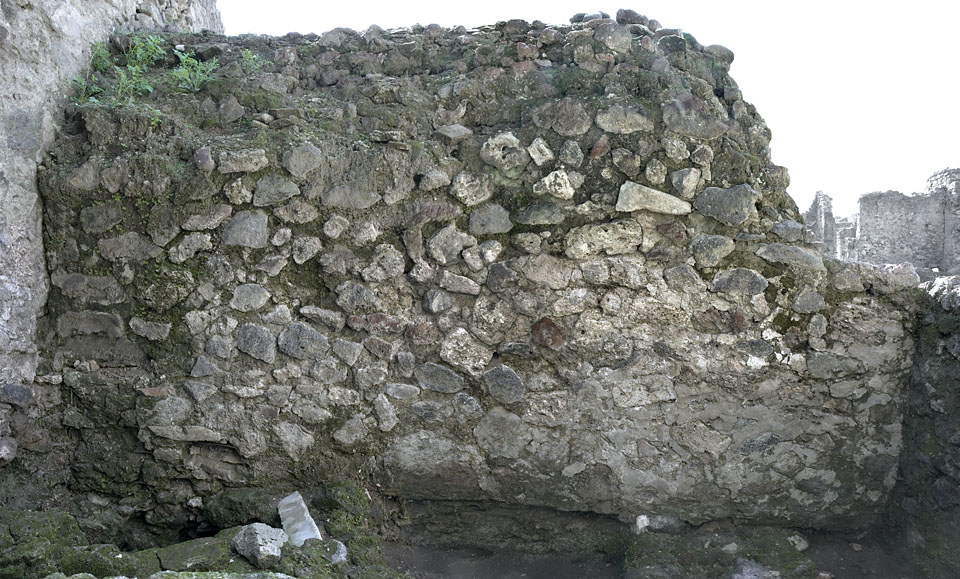West Wall
Description
Henrik Boman & Monika Nilsson
The west wall of room i is not a built wall as such — it is part of the massive bulk of the oven. The surface is dressed in stone, though the core is made out of large quantities of earth mortar. No brick/tiles are used in the dressing, in contrast to the front of the oven where terracotta is frequently used. Instead, the "wall" is built in opus incertum, mostly with lava stones but also with numerous limestone and cruma. The upper part of the structure, from where the curvature of the vault above the oven begins, the building material consists of lightweight earth mortar and cruma.
There is no plaster on the west wall.
As commented on earlier, the floor in the central section of the room, including along the west wall, is completely missing and the oven is built without a foundation. Its bottom line is clearly visible just above the NW corner structure (the hearth) and the latrine in the SW corner, where the oven is encroaching upon the western side of the latrine.
It is a conclusion not far at hand to assume that the oven was constructed directly upon the once existing, now destroyed, floor in room i. The latrine was most likely still in use after the oven was constructed.
Above the NW structure (hearth) the mortar in the wall is smooth to a height of c. 0.65m, as if the NW structure once had protected the wall and then dilapidated to the poor condition it is in today. However, the structure in the NW corner is not drawn on any of the earlier plans of the bakery (Presuhn 1878) or on the plans printed after WW II. The latter must have been relying on plans from before the destruction during the war (PPM, CTP, Eschebach).
Under the oven, in the 0.9m wide gap between the two structures by the west wall, c. 0.3m depth of the ground under the oven is visible; here the ground is soft and contains fragmented terracotta.
Beneath the oven, four stratas could be detected, all with a clear horizontal character. From the top:
I: Light brown, with lime pieces, charcoal and plaster fragments; the texture is hard. 1cm thick — a floor surface?
II: Large quantities of plaster; soft texture, though with some cocciopesto included. Plaster analyzed as a late type (type F). 16cm thick.
III. Darker brown layer with charcoal, no plaster fragments. Very soft ’earthy’ texture. 7cm thick.
IV: Grey layer with large chunks of lime and some charcoal pieces. 9cm visible. Soft character. Plaster fragment: type C.

